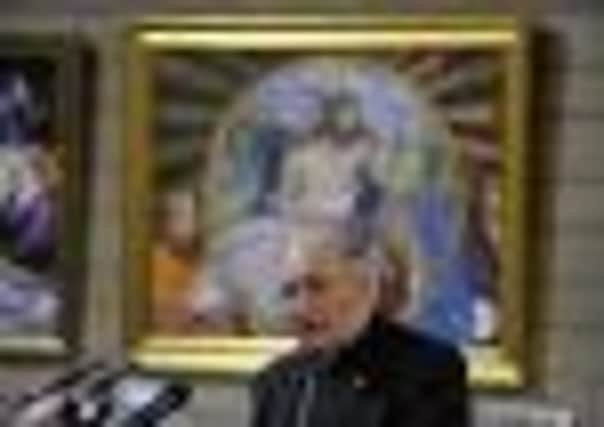Fears of ‘asset stripping’ as Church plans artefacts sale


Mario Conti, the Archbishop of Glasgow, instructed the Scottish Catholic Archives to compile a list of the rarest and most valuable items in the Church’s collection and find out their potential value at auction.
In what one historian yesterday described as “asset-stripping”, the Church is considering the sale of items such as a 16th-century book of hours – an illuminated manuscript of prayers and psalms belonging to the Catholic Mary, Queen of Scots – to raise up to £1.5m.
Advertisement
Hide AdAdvertisement
Hide AdAmong the other treasures that the Church in Scotland has is a rare painting of Mary commissioned by one of her ladies-in-waiting at her execution, a ring with a lock of hair from Prince Charles Edward Stuart (Bonnie Prince Charlie) and his silver snuffbox.
The Church archives also include letters from Bonnie Prince Charlie and material relating to the Stuart royal family.
The Holyrood Silver, a silver gilt monstrance – a star-shaped vessel which holds a consecrated host and is set with semi-precious stones – presented by James VII for the chapel at the Palace of Holyroodhouse and currently on loan to the National Museum of Scotland, was not considered for sale, Church sources say, as its value was deemed to be too low at about £20,000.
Archbishop Conti ordered the review in his role as president of the Scottish Catholic Heritage Commission in the hope of discovering items that could be sold to raise the sums necessary to complete the £4m proposed new national headquarters in Pollokshields.
The Church hopes the planned complex in Hamilton Drive will allow it to centralise seven of its national offices, such as media, child protection and social care, which are currently spread around the west of Scotland as well as providing a new headquarters for the Bishops’ Conference, the “cabinet” of the Scottish Catholic Church which consists of the country’s eight bishops. The centre will also have a state-of-the-art archive.
It was hoped the cost of the project would have been covered by the sale of Scotus College, the former seminary in Bearsden, and Columba House, where the Scottish Catholic Archive is currently located. However, the commercial property crash in 2008 has seen their respective values plummet and left the Church with a seven-figure shortfall.
A Catholic source said: “The idea of the review was to identify items whose sale, which I understand would be to the highest bidder, could raise £1m or so, and would be able to bridge the funding gap. It was really to examine a range of options with no firm decision made.”
Michael Turnbull, a prominent Catholic historian who has written a biography of the late Cardinal Gordon Gray, described the potential sell-off as “asset stripping”.
Advertisement
Hide AdAdvertisement
Hide AdHe said: “Why don’t they raise funds from Catholics at home and abroad if they have to sell this material. This is absolutely the family silver. This is short-termism. It is asset stripping.
“They are confusing two things: building a building for the bishops and the Catholic archives, and they are linking them together. They [the artefacts] do not belong to the bishops.”
Professor Tom Devine, the author of The Scottish Nation, who recently retired as the chair of Scottish history at Edinburgh University, said: “I am astonished that what seems to be considered – but, thankfully, not yet decided – is the selling off of some of the most important artefacts associated with Scottish Catholic heritage for reasons of property acquisition. This is the kind of decision or proposal that should be debated within the Church and not taken in secrecy behind closed doors.
“They [Church leaders] should cut their cloth to suit their current economic circumstances. This is the patrimony of the Scottish Catholic community, and such an issue has got to be debated widely before it is even entertained.”
The Catholic Church confirmed the review had taken place. A spokesman said: “The possibility of selling some non-core items held in the collection has been examined by the Scottish Catholic Heritage trustees. Some illuminated manuscripts have been identified for possible sale, including a book of hours.
“No decision has been taken on whether or not any item will be sold, but any such action would only be taken with the intention of maintaining the collections and ensuring long-term access to them.”